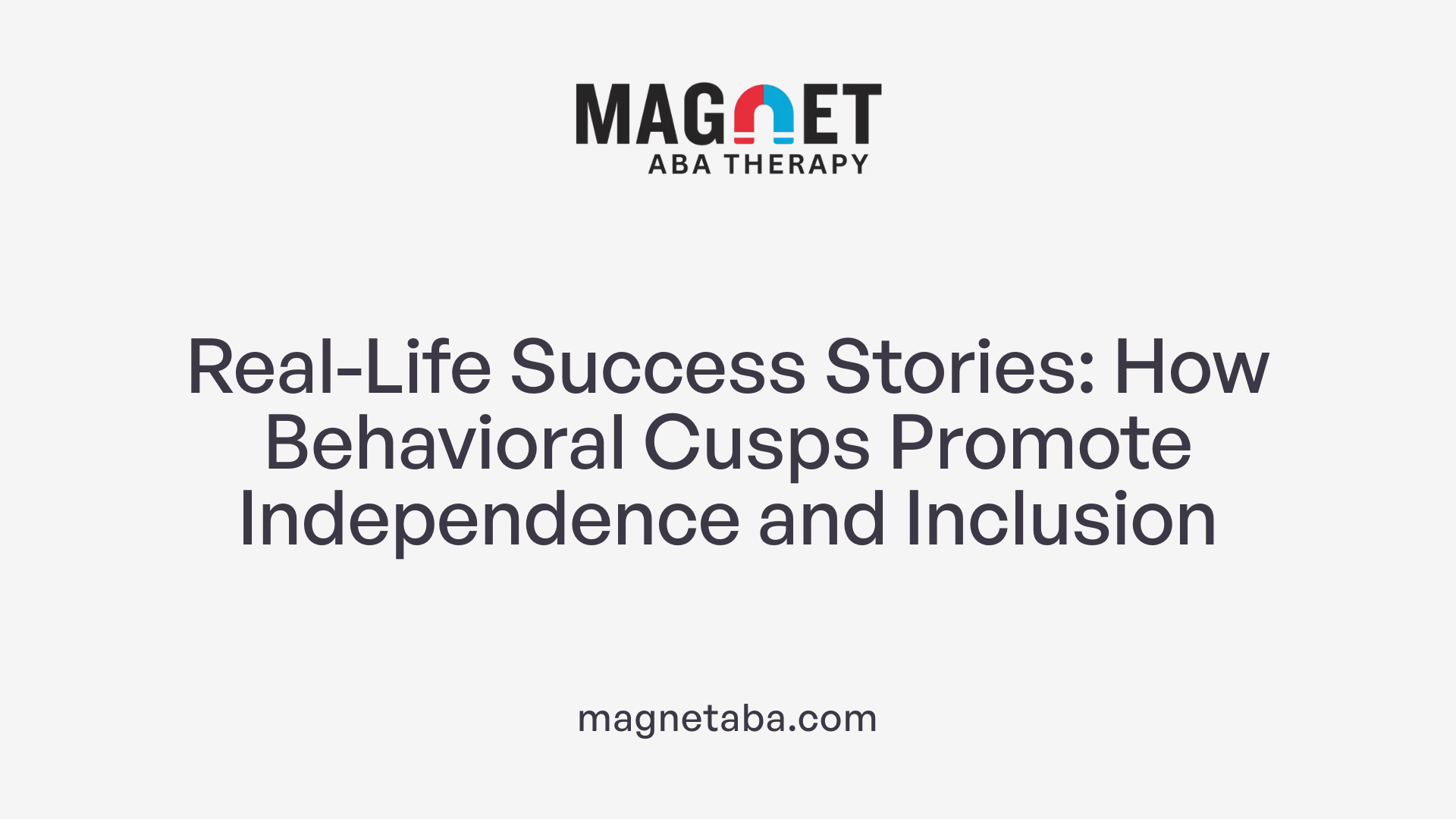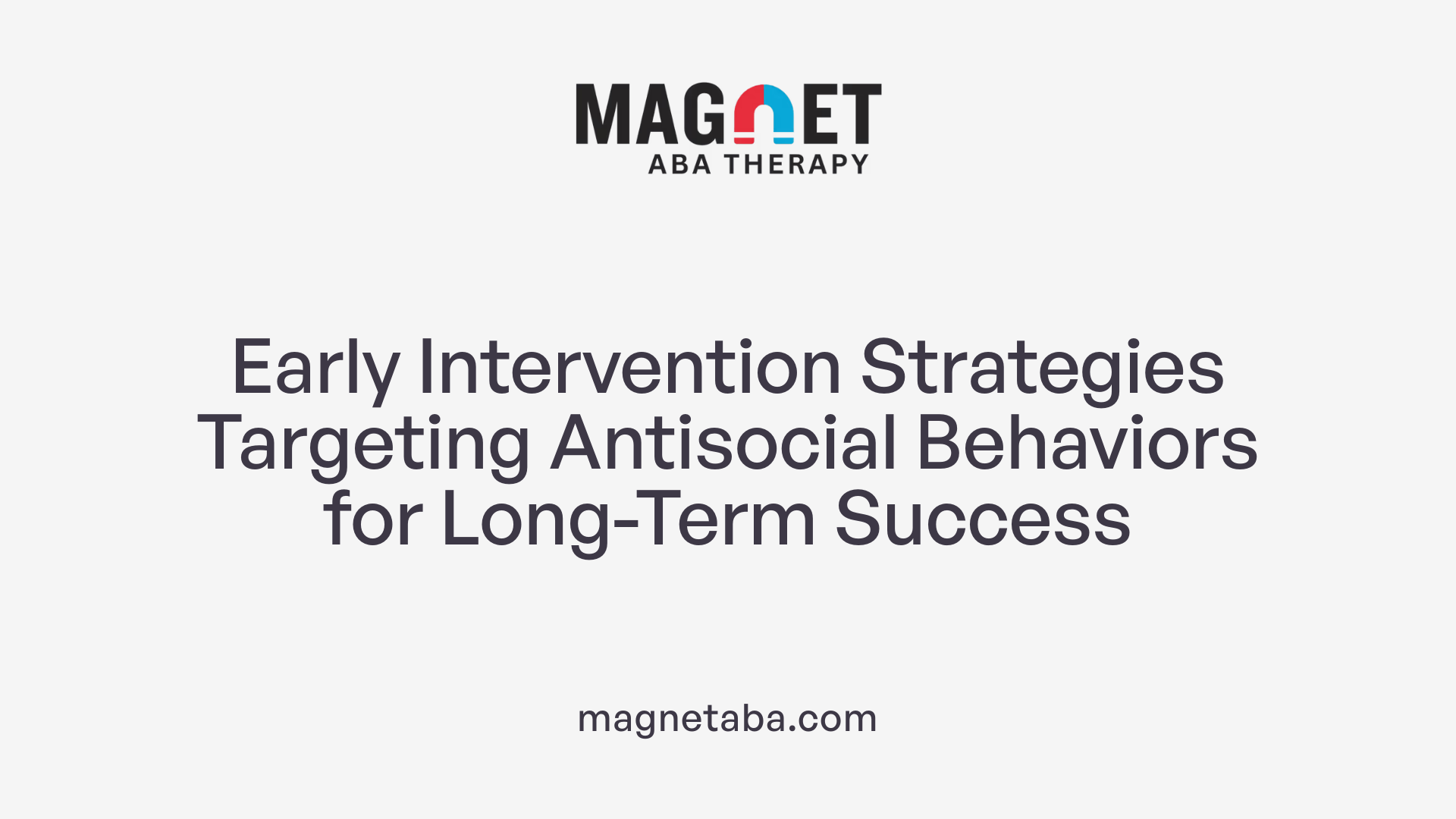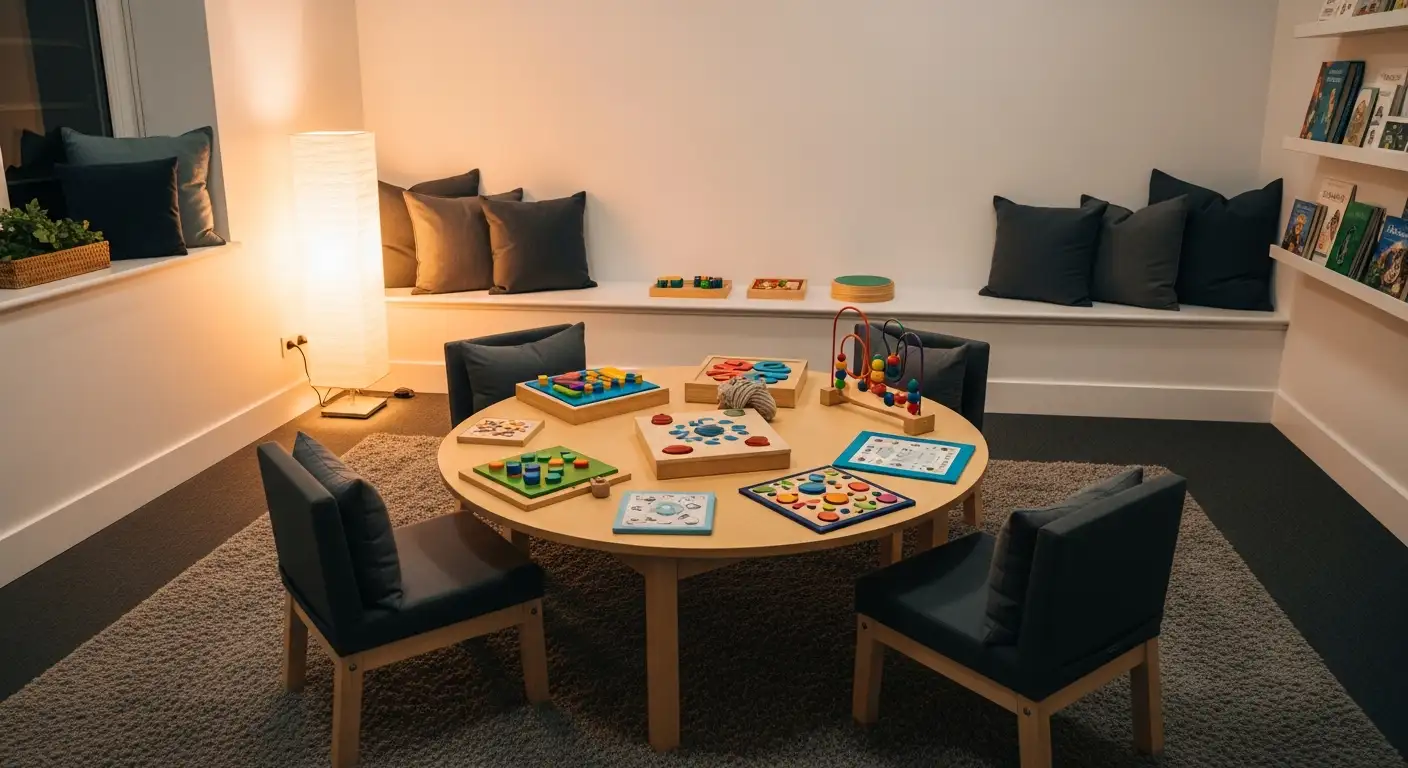Understanding Behavior Cusps in Autism Therapy
Behavior cusps represent pivotal behavioral changes that serve as gateways to extensive development in individuals, particularly those with autism and related developmental disorders. Recognizing and targeting these cusps in therapy can transform a person's behavioral repertoire, leading to meaningful and lasting improvements in communication, social interaction, and independence. This article explores what behavior cusps are, why they matter in behavioral analysis therapy, and how they contribute to effective treatment strategies for autism.
Defining Behavior Cusps: The Gateway to Behavioral Transformation
What are behavior cusps?
Behavior cusps are pivotal points of behavioral change that significantly transform a person's behavioral repertoire. These are not just simple new skills; they act as crucial entry points that open access to new environments, reinforcers, and social contingencies. This access often renders previous behaviors obsolete, paving the way for extensive further development.
Understanding behavioral repertoires
A behavioral repertoire refers to the full range of behaviors an individual can perform. Behavioral cusps play a central role in expanding this repertoire by providing access to new contingencies—circumstances where behavior can be reinforced. For example, crawling in infants is a behavioral cusp because it dramatically increases their ability to explore and interact with their surroundings, thereby enriching their behavioral repertoire.
Why are cusps important as entry points for change?
By opening access to new environments and reinforcers, behavioral cusps facilitate the development of cumulative-hierarchical learning behaviors. This means they lay the groundwork for acquiring more complex behaviors by providing foundational skills that build upon each other.
In therapeutic contexts, especially with individuals with autism and pervasive developmental disorders, targeting behavioral cusps can lead to widespread and meaningful growth. These cusps serve as transformative milestones whose acquisition enables significant progress in both social and functional domains.
Behavior Cusps and Their Role in Applied Behavior Analysis (ABA) Therapy
What is Applied Behavior Analysis (ABA) therapy and how is it used in treating autism?
Applied Behavior Analysis (ABA) therapy is a science-based approach that focuses on improving socially meaningful skills in individuals with autism. By applying principles of learning such as reinforcement, ABA addresses specific behaviors, aiming to increase positive ones and reduce harmful or limiting behaviors. This therapy systematically observes behavior and environmental interactions to tailor interventions.
How are behavior cusps integrated into ABA therapy?
Behavior cusps serve as pivotal learning milestones within ABA therapy. These are behavioral changes that open access to new environments, reinforcers, and further skill development. When a behavior cusp is achieved, it often renders previous, more limited behaviors obsolete and enables the individual to build cumulative-hierarchical learning repertoires.
For example, foundational skills like imitation and receptive language can be seen as cusps enabling more complex behaviors. Targeting these within ABA ensures that the individual gains access to natural social contingencies and broader learning opportunities, fostering meaningful progress.
What role do pivotal response interventions play in connection with behavior cusps?
Pivotal response interventions (PRIs) target behaviors that lead to widespread improvements across other behaviors. These pivotal behaviors are closely aligned with the concept of behavior cusps, as they act as entry points to multiple new learning opportunities. Incorporating PRIs in ABA helps create expansive collateral changes, enhancing overall behavioral development.
In summary, behavior cusps are central to ABA therapy for autism because they mark transformative behavioral changes. By focusing on these crucial learning points through pivotal response interventions, ABA therapy facilitates rapid and meaningful development in social, communication, and adaptive skills.
Who Provides ABA Therapy and Implements Behavioral Cusps Interventions?
Providers of ABA therapy
ABA therapy for individuals with autism is typically delivered by a team of qualified professionals trained in applied behavior analysis principles. The primary providers involved include Board Certified Behavior Analysts (BCBAs), who are responsible for conducting comprehensive assessments, developing behavior intervention plans, and supervising implementation.
Roles of BCBAs, BCaBAs, and RBTs
Supporting BCBAs, Board Certified Assistant Behavior Analysts (BCaBAs) assist in designing and modifying treatment plans under BCBA supervision. Registered Behavior Technicians (RBTs) play a critical role in directly implementing behavioral interventions in various settings such as schools, clinics, and homes. Together, these practitioners work closely to identify behavioral cusps — pivotal behavioral changes that open access to new skills and environments — facilitating meaningful, cumulative behavioral development.
Collaboration for behavior cusp identification
Identifying and targeting behavioral cusps requires collaborative efforts among practitioners, family members, and other stakeholders. Through person-centered planning sessions, they integrate personal goals and community inclusion priorities into intervention strategies. This teamwork ensures that the behavior changes targeted produce broad, positive impacts on the individual’s repertoire, quality of life, and independence.
This multidisciplinary approach ensures ABA therapy is comprehensive and tailored, leveraging behavioral cusps to maximize developmental progress and social integration for those with autism and other pervasive developmental disorders.
Main Goals of Behavioral Analysis Therapy in Autism Spectrum Disorder
What are the main goals of behavioral analysis therapy for autism?
Behavioral analysis therapy for individuals with autism primarily aims to enhance socially significant behaviors that improve communication, social interaction, and independence. By focusing on increasing useful behaviors, therapy helps individuals better navigate daily life and community settings.
A central focus lies in reducing challenging behaviors that might interfere with learning and social inclusion. This reduction improves safety and quality of life both for individuals with autism and their support networks.
Behavioral cusps play a crucial role in achieving these goals. They are pivotal behavioral changes that open access to new environments, learning opportunities, and social contingencies. By targeting these cusps, therapy facilitates the rapid acquisition of new skills and behaviors that build on one another in a cumulative hierarchical manner.
For example, teaching a child with autism to imitate or respond to language can be a cusp that unlocks further complex skills like conversation or academic learning. Likewise, increasing social engagement behaviors can bring natural reinforcers into the child’s life, promoting continued development.
In summary, the main goals of behavioral analysis therapy in autism are to promote meaningful and functional behavioral improvements, reduce behaviors that limit growth, and foster independence. Leveraging behavioral cusps within this framework allows more effective and lasting behavioral change, ultimately improving the individual’s life quality and community participation.
The Concept of Cumulative-Hierarchical Learning and Behavioral Cusps
How do behavioral cusps support learning hierarchies?
Behavioral cusps serve as pivotal behavioral entry points that unlock access to new learning environments and contingencies. They are essential for establishing cumulative-hierarchical learning (CHL), where each new behavior builds progressively on previously acquired skills. This hierarchical structure allows complex repertoires to develop from foundational behaviors.
In autism therapy, behavioral cusps are targeted strategically to build and expand behavioral repertoires. By mastering these cusps, individuals gain access to new social contingencies, reinforcers, and environments. This access not only broadens their behavioral options but often renders earlier, less functional behaviors obsolete. For example, foundational skills like imitation and receptive language function as gateways for more complex behaviors, effectively serving as cusps in the learning hierarchy.
Therapeutic approaches that integrate behavioral cusps focus on cumulative and meaningful learning progress. Curriculum design for children with autism incorporates these principles by emphasizing behaviors that enable further learning and social participation. This method contrasts with traditional behavior modification techniques that might not facilitate comprehensive behavior development.
As individuals acquire behavioral cusps, their overall behavioral repertoire broadens significantly. This expansive development is particularly critical in pervasive developmental disorders, where sequential skill acquisition can lead to increased independence and improved quality of life. Therefore, behavioral cusps are not mere isolated skills but transformative milestones that promote continuous, hierarchical learning and behavioral growth.
| Aspect | Description | Role in Autism Therapy |
|---|---|---|
| Cumulative-Hierarchical Learning | A learning process where skills build on one another progressively | Guides curriculum design, ensuring skills develop in a meaningful sequence |
| Behavioral Cusps | Pivotal behaviors providing access to new contingencies | Targets for intervention to enhance repertoires and independence |
| Building Behavioral Repertoires | Developing a broad set of functional behaviors | Enables social inclusion and expands natural reinforcer access |
Selection Criteria for Behavioral Cusps: Ensuring Effective Intervention Targets
What criteria are used to select behavioral cusps for intervention?
Selecting appropriate behavioral cusps is crucial for successful behavioral intervention, especially in individuals with autism and pervasive developmental disorders. Several criteria guide this selection process to ensure that targeted behaviors lead to meaningful and expansive development.
One important criterion is access to new reinforcers and environments. A behavioral cusp must open doors to previously unavailable opportunities, allowing the individual to interact with new settings and gain natural reinforcers. For example, crawling in infants acts as a cusp by increasing access to various environmental experiences.
The generativeness of behaviors is another essential factor. Behavioral cusps should promote a broad range of new behaviors that build on the initial change. This generative effect allows the individual to learn cumulative-hierarchical behavior repertoires that facilitate rapid and meaningful progress.
Behavioral cusps must also compete effectively with inappropriate responses. Targeted behaviors should replace or reduce problematic actions, providing more functional alternatives. This competitive advantage increases the likelihood that the new behaviors will be maintained over time.
Lastly, social validity plays a key role in cusp selection. Interventions must address behaviors that are visibly meaningful and valuable to the individual’s life, their families, and community. Socially valid cusps enhance community inclusion and overall quality of life, often aligning with person-centered planning goals.
By focusing on these criteria—new access, generativeness, competition with maladaptive responses, and social validity—practitioners can better identify behavioral cusps that yield expansive, durable, and socially significant outcomes.
Behavior Cusps as ‘Killer Apps’: A Technology Analogy

What Are Behavioral Cusps Compared to Killer Apps?
Behavioral cusps can be likened to "killer apps" in technology — those rare, groundbreaking applications that revolutionize how we use devices or access services. Just as a killer app draws users into entirely new capabilities, behavioral cusps serve as pivotal behavioral changes that dramatically open up new opportunities and environments for individuals.
How Do Behavioral Cusps Transform Behavior and Environment Access?
When a behavioral cusp occurs, it not only introduces a new behavior but also unlocks access to previously unavailable reinforcers, social interactions, and environments. For example, infants learning to crawl gain broader access to their surroundings, just as killer apps bring new functionalities to a device.
This transformation allows the individual to develop a richer, cumulative-hierarchical behavioral repertoire — much like how a successful app can lead a user deeper into a technology ecosystem. In the context of autism therapy, introducing such cusps is essential for opening pathways to more natural and meaningful learning and social engagement.
In summary, viewing behavioral cusps as "killer apps" highlights their immense significance: they not only change behaviors but revolutionize the individual's interaction with their world, much like transformative software changes user experiences in technology.
Practical Examples of Behavior Cusps Enhancing Independence and Social Inclusion

Case study: Sarah attending a basketball game
Sarah, a woman with developmental disabilities, illustrates the transformative power of behavioral cusps. When she began attending basketball games—a pivotal behavior change—her access to social interactions and community activities expanded dramatically. This cusp enabled Sarah to engage more fully in her environment, increasing social opportunities and fostering a sense of belonging.
Case study: Nancy’s employment and reduced dangerous behaviors
Nancy, a nonverbal woman with autism, experienced significant improvements through targeted behavioral cusps, such as retrieving books. These behaviors paved the way for achieving employment and fulfilling social goals. The shift resulted in reduced dangerous behaviors and increased independence, demonstrating how carefully chosen cusps can lead to meaningful life changes.
Community participation and social interaction
Behavioral cusps serve as critical entry points that enhance an individual's ability to access natural reinforcers and social contingencies. By targeting these behaviors, interventions promote cumulative and hierarchical learning that supports broader community inclusion. Collaborative person-centered planning, incorporating family and community members, ensures that these behavioral milestones align with personal goals and facilitate better quality of life through increased participation and interaction.
The Role of Person-Centered Planning in Identifying and Supporting Cusps
How Does Collaborative Planning Support Behavioral Cusps?
Person-centered planning is a collaborative approach that involves individuals with autism, their families, caregivers, and community members. This inclusive process ensures that behavioral cusps are identified not just as isolated behaviors but as pivotal points that truly align with the person's environment and lifestyle. By pooling diverse perspectives, stakeholders can pinpoint which behavioral changes will unlock access to new opportunities, social contingencies, and reinforcers.
What Is the Importance of Family and Community Involvement?
Involving family and community members enriches the planning process by adding realistic insights into day-to-day living and social interactions. These key participants provide crucial information about the individual's preferences and the natural settings where newly acquired skills will be applied. Collaborative efforts lead to better selection of behavioral cusps that have meaningful impact, promoting community integration, participation, and improved quality of life.
How Should Behavioral Cusps Align With Personal Goals?
Behavioral cusps are most effective when they are directly linked to the individual’s personal goals and aspirations. Person-centered planning ensures that interventions are tailored to enhance the person's independence, employment prospects, social skills, and overall well-being. Rather than merely reducing inappropriate behaviors, the focus is on empowering the individual to engage more fully with their environment, fostering cumulative development of functional and socially valid repertoires.
By embedding behavioral cusp identification and intervention within a person-centered planning framework, treatment programs become more holistic and sustainable. Collaborative stakeholder involvement, respect for personal goals, and community integration form the foundation for lasting, meaningful behavioral change.
Behavior Cusps and Early Intervention: Addressing Antisocial Behaviors

How does early antisocial behavior predict future outcomes?
Research shows that antisocial behavior in children can strongly predict later delinquency and adult criminality. This connection underscores the necessity of recognizing problematic behaviors early to prevent more severe long-term consequences.
Why is early intervention crucial in managing antisocial behaviors?
Addressing antisocial tendencies at a young age creates opportunities to redirect behavioral development positively. Early intervention leverages behavioral cusps—pivotal behavioral changes that open new learning pathways and social opportunities—allowing children to replace harmful behaviors with more adaptive repertoires.
What intervention strategies are effective?
Programs that combine parent training and social skills instruction have demonstrated long-lasting positive effects. These interventions focus on foundational skills that build upon each other, enabling cumulative and hierarchical behavior development critical for managing antisocial tendencies. Insights from behavioral cusps theory suggest that targeting such pivotal behaviors leads to widespread beneficial changes.
Together, these approaches highlight the practical importance of behavior cusps in designing early, targeted interventions that improve outcomes for children displaying antisocial behaviors.
Behavioral Assessment Models for Identifying Behavioral Cusps
Observation and Questioning Techniques
Behavioral assessment begins with careful observation and purposeful questioning designed to uncover pivotal behaviors known as behavioral cusps. Through direct observation, professionals watch how individuals interact with their environment and identify behaviors that open new opportunities for learning and social engagement. Questioning gathers detailed information from caregivers, educators, and the individuals themselves, enriching understanding of the context and consequences of certain behaviors.
Data Gathering
Comprehensive data collection is critical in behavioral assessment to accurately identify cusps. This involves recording occurrences of targeted behaviors, their antecedents, and consequences to discern patterns and the potential impact on the individual's learning progression. Detailed data help in recognizing behaviors that serve as gateways to new environments, reinforcers, or repertoires, ensuring that interventions focus on behaviors with the greatest developmental potential.
Targeting Cusps for Intervention
Once behavioral cusps are identified through assessment, interventions can be designed to specifically target these pivotal behaviors. Focusing on cusps enables significant, generalized improvements across multiple skills and behaviors. This approach facilitates cumulative-hierarchical learning, promoting rapid and meaningful growth. Collaborative efforts involving family, educators, and community members ensure that cusp selection aligns with the individual's goals and social context, enhancing the effectiveness and social validity of the interventions.
Curriculum Design Using Behavioral Cusps for Children with Autism
How is the curriculum structured for children with autism using behavioral cusps?
Curriculum design for children with autism often adopts a hierarchical structure grounded in the concept of behavioral cusps. This means the curriculum is arranged to progressively build on pivotal behavioral changes, which serve as gateways to more complex learning.
By focusing on hierarchical accumulation, educators can ensure that foundational skills lead systematically to more advanced repertoires. Such an arrangement allows each newly acquired behavior to open access to new contingencies and learning opportunities, effectively scaffolding development.
How does this design promote rapid and meaningful learning progress?
By targeting behavioral cusps, this curriculum approach encourages rapid and meaningful progress. Since behavioral cusps grant access to new environmental reinforcers and social contingencies, acquiring them often results in widespread collateral gains across multiple behaviors.
This cumulative advancing of skills enables children to quickly shift from simpler competencies to more complex and socially significant behaviors, facilitating a more efficient learning trajectory.
What foundational skills are targeted, and why?
Critical foundational skills such as imitation and receptive language are emphasized because they establish essential behavioral hierarchies. Imitation serves as a building block for learning new behaviors by copying modeled actions, while receptive language enables better understanding and processing of communication.
Targeting these skills first creates a robust platform for the development of more intricate behaviors and repertoires. Their acquisition represents pivotal points that unlock further learning possibilities and accelerate curriculum progress for children with autism.
Beyond Traditional Behavior Modification: Fostering Complex, Cumulative Behavior Development
What are the limitations of classic behavior modification?
Traditional behavior modification techniques often target isolated behaviors using straightforward stimulus-response methods. While effective for discrete skill acquisition, these methods frequently fall short when addressing the development of complex, integrated behavioral repertoires. They typically lack strategies for generating lasting, wide-ranging change across a person's entire behavior set, often missing how new behaviors can transform access to environments and social opportunities.
Why focus on cumulative behavioral repertoire development?
Behavioral cusps offer a powerful framework to transcend these limitations. By emphasizing pivotal behavioral changes that open doors to new reinforcers, environments, and social contingencies, behavioral cusps promote the growth of cumulative-hierarchical learning behaviors. This means that learning new, foundational skills—such as imitation or receptive language—not only adds isolated abilities but also establishes building blocks for increasingly complex behaviors over time. For example, crawling in infants acts as a behavioral cusp by expanding environmental interaction, thereby facilitating further behavioral growth.
How are behavioral cusps integrated into comprehensive treatment programs?
Comprehensive interventions, especially in autism therapy, incorporate behavioral cusps to create hierarchical curricula targeting foundational and complex behaviors. This approach entails selecting cusp behaviors with criteria like generativeness, social validity, and the capacity to outcompete inappropriate responses. Treatment programs often combine parent training and social skills instruction, leveraging behavioral cusps to improve independence, social inclusion, and overall quality of life. Collaborative person-centered planning involving families and community members ensures targeted interventions align with personal goals, thereby maximizing community integration and sustainable behavioral development.
Pivotal Response Interventions: Aligning with Behavioral Cusp Concepts
What Are Pivotal Response Interventions?
Pivotal Response Interventions (PRIs) focus on teaching pivotal behaviors that lead to widespread improvements across multiple areas of functioning. These pivotal behaviors are similar in nature to behavioral cusps, as learning them opens access to new opportunities and learning experiences.
How Do Pivotal Interventions Lead to Broad Behavior Changes?
Targeting pivotal behaviors initiates cascading positive effects throughout an individual's behavioral repertoire. For example, acquiring communication skills can enhance social interactions, reduce problem behaviors, and improve learning. This broad impact aligns with the concept of behavioral cusps, where a single behavioral change enables access to new environments, reinforcers, and learning contingencies.
Application in Autism Therapy
In autism therapy, PRIs are designed to accelerate development by focusing on pivotal skills such as motivation, self-management, and initiation of social interactions. Emphasizing these areas allows practitioners to promote cumulative and hierarchical learning repertoires. This approach contrasts with traditional behavior modification, which may address isolated behaviors without facilitating foundational change.
By integrating the principles of behavioral cusps, practitioners can ensure interventions are socially valid and aligned with personal goals. The strategic targeting of pivotal responses not only leads to immediate improvements but also enhances overall quality of life and community participation for individuals with autism.
Behavior Cusps Increasing Access to Natural Reinforcers and Social Environments
What Are Behavioral Cusps and Their Role in Accessing Natural Contingencies?
Behavioral cusps are pivotal changes in behavior that open new opportunities for learning and interaction. These changes allow individuals, especially those with autism and other developmental disorders, to access natural reinforcers that were previously unavailable. For example, when a child learns to crawl—a classic cusp—they gain increased access to their environment, leading to a cascade of new learning and behaviors.
How Do Behavioral Cusps Enhance Learning Through Environmental Interaction?
By providing access to novel environments and social contingencies, behavioral cusps facilitate cumulative and hierarchical learning. This effect accelerates behavioral repertoires as new behaviors build on the foundational skills established by earlier cusps. Because the individual can engage more fully with their surroundings, learning becomes more natural and meaningful.
What Is the Impact of Behavioral Cusps on Social Inclusion?
Behavioral cusps improve social participation by enabling access to broader environments and social interactions. Person-centered planning that targets these cusps involves collaboration among family, community, and professionals, ensuring that intervention aligns with personal goals. Such collaborative efforts enhance community inclusion and the individual’s quality of life.
| Aspect | Role of Behavioral Cusps | Examples and Outcomes |
|---|---|---|
| Access to Natural Reinforcers | Open new contingencies leading to motivation and learning | Crawling grants environmental exploration; attending social events increases community involvement |
| Environmental Interaction | Facilitate cumulative learning by accessing complex environments | Improved imitation and receptive language development form behavior hierarchies |
| Social Inclusion | Enable engagement with social networks, enhancing collaboration | Increased independence and employment in individuals with autism through targeted cusps |
Collaborative Efforts in Selecting and Implementing Behavioral Cusps
Stakeholder Involvement
Selecting and implementing behavioral cusps is most effective when it involves collaborative efforts among all relevant stakeholders. This group typically includes family members, therapists, educators, and community representatives. Their combined insights ensure that the targeted behavioral changes align with the individual's needs and the environments they engage with daily.
Personalized Goal Alignment
Successful interventions require that behavioral cusps be closely aligned with the personal goals of the individual. When these pivotal behaviors are chosen based on what matters most to the person—such as improving independence, social interaction, or employment—there is a greater chance of meaningful and lasting change. This personalized approach enhances motivation and supports sustained behavior development.
Community Inclusion Importance
Community inclusion is a central objective when selecting behavioral cusps. By targeting behaviors that open access to new social, educational, and recreational environments, individuals are better supported to participate fully in their communities. This not only broadens behavioral repertoires but also promotes social validity, making the behavior changes relevant and reinforcing in everyday life.
Together, collaborative stakeholder involvement, individualized goal setting, and a focus on community inclusion create a robust framework for selecting and implementing behavioral cusps. This approach facilitates significant, cumulative behavioral development, ultimately improving quality of life for individuals with autism and pervasive developmental disorders.
The Influence of Behavioral Cusps on Long-Term Outcomes

Sustained Behavioral Gains
Behavioral cusps serve as powerful catalysts for sustained improvements in behavior by facilitating access to new contingencies and environments. When a behavioral cusp is acquired, it often renders previous behaviors obsolete and initiates a cascade of positive changes. For instance, in autism therapy, targeting foundational skills such as imitation and receptive language through behavioral cusps fosters cumulative-hierarchical learning. This structured development leads to enduring behavioral repertoires, enabling individuals to acquire more complex skills over time.
Quality of Life Improvements
The positive ripple effects of behavioral cusps extend beyond learning new skills; they significantly enhance quality of life. Person-centered planning sessions leverage behavioral cusps to improve collaborative conversations and ensure interventions align with personal goals and community inclusion. Examples like Sarah, who expanded social participation after attending a basketball game, and Nancy, who gained employment through targeted behavioral changes, demonstrate how behavioral cusps can promote social integration and independence for individuals with developmental disabilities.
Reduction of Harmful Behaviors
Early intervention based on identifying and targeting behavioral cusps can effectively reduce harmful or antisocial behaviors. Research indicates that antisocial behavior in children often predicts later delinquency and criminality, underscoring the importance of timely behavioral intervention. Treatment programs incorporating parent training and social skills development capitalize on behavioral cusps to induce widespread positive behavioral adjustments, decreasing dangerous behaviors and promoting safer, more adaptive functioning.
Through the strategic identification and support of behavioral cusps, interventions achieve not only immediate skill acquisition but also long-term developmental gains that enhance overall well-being and reduce risk behaviors.
Why Behavior Cusps are Essential in Autism Therapy
Behavior cusps represent more than just isolated behavior changes; they are transformative milestones that open doors to new skills, environments, and reinforcements critical for individuals with autism. By identifying and targeting these cusps, therapists and caregivers can promote rapid, meaningful, and lasting improvements in communication, independence, and social integration. Through collaborative planning, evidence-based ABA strategies, and careful selection based on clear criteria, behavioral cusps provide a roadmap for effective and personalized therapy that enhances quality of life and supports long-term developmental success.
References
- Behavioral Cusps - Garnett J. Smith, Dennis McDougall ...
- The Final Piece to a Complete Science of Behavior ...
- (PDF) Behavioral Cusps: A Person-Centered Concept for ...
- Applied Behavior Analysis (ABA)
- Who can provide ABA therapy?
- Children's Specialized ABA | Whole-Child Autism Care
- 20 Usual and Not-So-Usual Jobs in Applied Behavior Analysis
- Applied Behavior Analysis (ABA)











